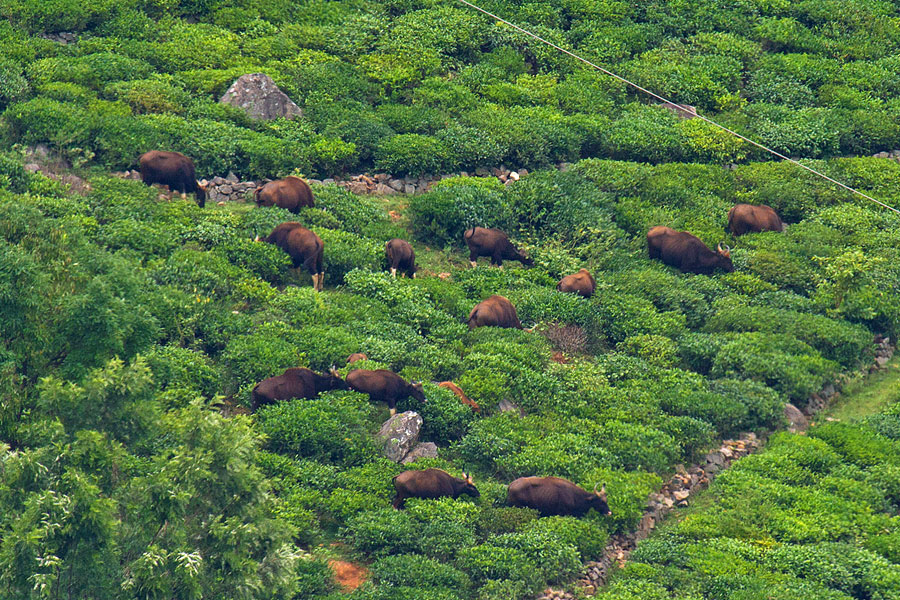
When was the last time you saw a continuous stretch of forest in India — wilderness as far as your eyes can see? It has indeed become a rarity. There is always a settlement or an agricultural field. Human imprint is everywhere and the notion of a ‘pristine’ wilderness doesn’t exist anymore. Our growing demands have led us to expand widely and rapidly, and now, more than ever, this has brought us in direct contact with wild animals. Wildlife is left with no choice but to ‘make do’ with what is left of their homes.
The tea estates at Kotagiri, about 60 km from Coimbatore are an example of this. Before they were turned into tea estates, these areas were continuous patches of evergreen forest of the Western Ghats. While at first it would have started with small patches of tea estates amidst the forest, it is quite the opposite now. There are small patches of forest left between the tea estates.
The Indian Gaur is the largest species of wild cattle in the world. They are distributed quite widely across Central and Southern India, and are found quite extensively in the Western Ghats. The gaur venture into the tea plantations very often from adjoining forest fragments. While they are not interested in the tea for food, they graze on the grass on the narrow paths in the plantations.

 CI is a non-profit, non-commercial portal that aims to facilitate wildlife and nature conservation by providing reliable information and the tools needed to campaign effectively.
CI is a non-profit, non-commercial portal that aims to facilitate wildlife and nature conservation by providing reliable information and the tools needed to campaign effectively.
Chosen as 'Picture of the Week'
Thanks to the rapid expansion of the human footprint, animals like the gaur have become refugees in their own land. What were once evergreen forests and grasslands in the southern Western Ghats have turned into extensive tea estates as far as the eye can see. When animals come into these estates to graze on the grass that grows amidst the tea, they are said to the 'straying', and it is treated as a case of man-animal conflict!